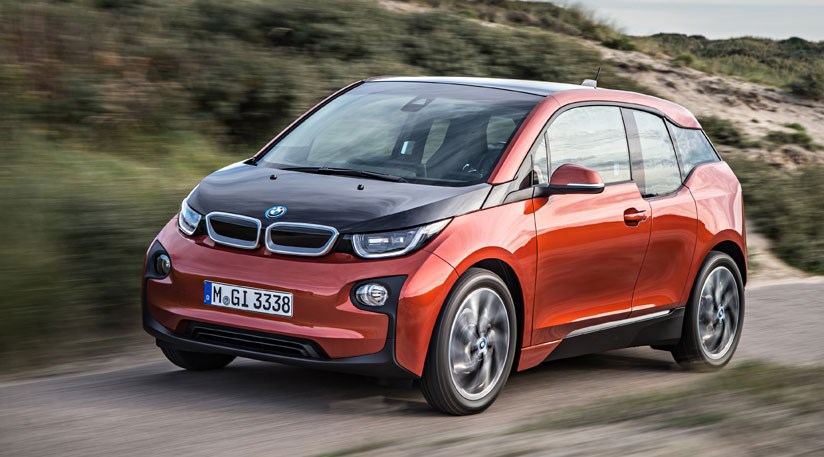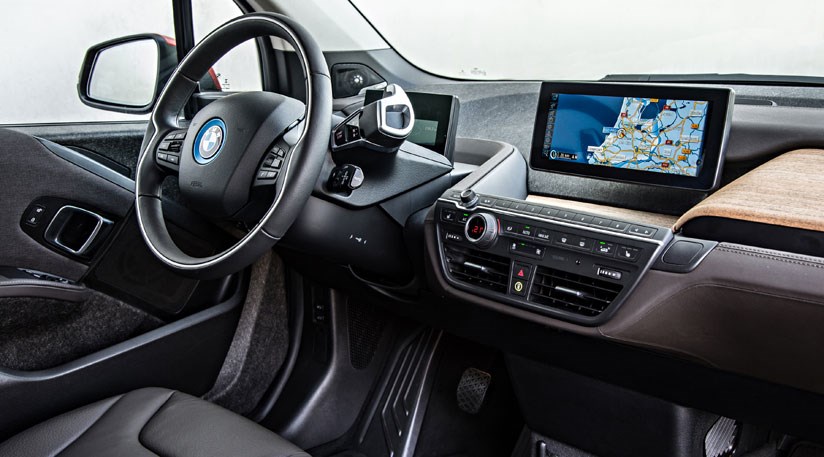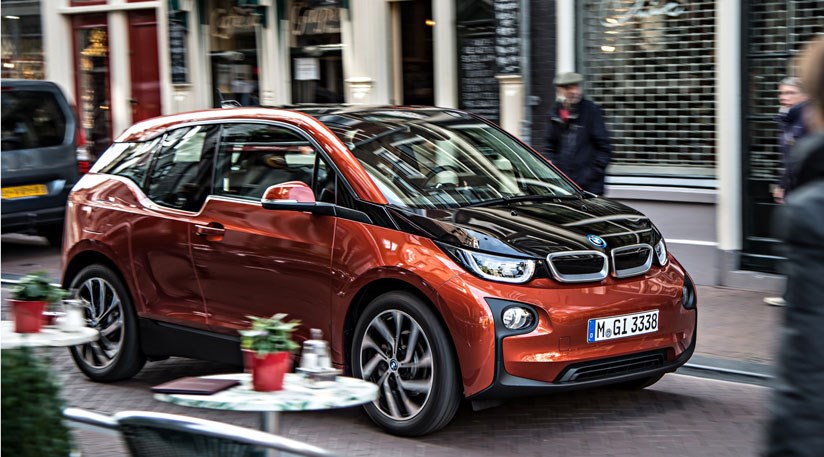The BMW i3 is a revolution, says BMW – but is it all marketing hype or is this car a genuine game-changer?
It’s been in development since 2007 with a dedicated team as part of the BMW ‘i’ sub-brand. If this small electric city car with its carbonfibre chassis, zero emissions and prestige badge sell for the BMW i3’s price of £25k – the 10,000 per-annum sales BMW’s capable of building won’t be a simple overnight success.
Best used electric cars: the CAR guide
The criteria for the i3, which joins the Nissan Leaf, Renault Zoe and VW e-Up! in the battle for urban electric supremacy, is focused on city dwellers and young people who don’t see a car as the key to independence that their parent’s generation did. It’s less than four metres long, with a 9.8m turning circle on those skinny 19in alloys, so it can slice and dice traffic and nearly out-manouevre a London Black Cab. The Chevrolet Volt/Vauxhall Ampera were short-lived contenders, as intriguing as they may have been.

The stunning looks of the plastic panels – which are replaceable, helping with a lower insurance rating – make a bold statement, regardless of whether you’re a fan or not. It’s design centric, made to appeal not simply be different, and it works: the i3 retains the BMW kidney-grille, but its muscular haunches and layered exterior, backed up by a Gorilla-glass looking rear hatch, make it look like a concept car driven straight off the show floor. It adds at least five years to its immediate rivals – and then some.
Our guide to electric BMW cars
Inside, it also looks like BMW is showing off with a suite of materials: there’s stitched leather and textured plastics (nothing unusual there) mixed with cloth and a weird-looking material on the dash towards the windscreen that looks like it’s been ‘spun’ out of recycled plastic. Every inch is textured, covering the undulating, flowing design. The door trims have straked door-pulls, while the glove box lid in our test car is made of Eucalyptus wood that sinks below the massive centre display. It’s a nest of smooth angles, not aggressive edges, and it’s designed not just for the driver. Case one is that there’s no centre stack in the front – which, says BMW, means you can exit on either side of the car for both safety and convenience. The second case is that centre display, which is intentionally large enough for the rear passengers to enjoy, too.

The pilot’s seat is still the best in the house. It feels quite high, but the leather’s good quality and it’s supportive and comfortable without being too cushy. Reach behind the two-spoke steering wheel and there’s a stalk on the right-hand side: it has the Start Button on it, which is illuminated when the car is ready. Once pushed, there’s a chime to let you know the i3’s ready for play, so you can twist the chunky gear selector into D. The action isn’t as premium as you’d expect, and some of the fit and finish in places – such as the gap between the glovebox lid and the rest of the tree – are average, but the cabin does feel edgy and cultured.
What’s it like to drive?
The controls give you access to a 168bhp electric motor, and a lithium-ion battery pack. Flatten the throttle, and the instant 184lb ft of torque makes the i3 a serious traffic brawler thanks to its brisk response. In fact, its 7.2sec 0-62mph claim is only three-tenths shy of the Ford Fiesta ST (a CAR favourite), making it versatile and a bit of a Q-car as a city hatch. There’s an electric whir, much like every other EV we’ve driven, but it’s fainter thanks to the well-insulated cabin. The only real complaints in terms of refinement come from motorway wind noise – and the odd buffeting in high winds – and the firm ride.

The ride’s not bone-jarring, but it’s not luxurious either, with clunkiness over larger bumps. Its smooth at slow speed, though, and those 19in alloys – with super-skinny 155 front and 175 rear rubber – provide loads of straight line traction and impressive roadholding around corners. You can’t push the i3 much off line, its rear drive, excellent body control and superb balance making it quite fun to throw around bends, even if the steering lacks a little involvement and feel. There’s a Dynamic traction mode, but even here, you won’t find it wheelspinning out of corners even when pushing hard. The regenerative braking takes a bit of getting used to, as when you lift off, it snaps your head back rather quickly – smooth lift-offs into corners and junctions where you’d normally brake rectify this.
BMW i3 charging
The BMW i3’s maximum battery range – a claimed 124 miles – is achieved after an eight-hour charge using a conventional power socket, but naturally, BMW will offer quick charging methods to reduce charge time. The car’s status – range, charge-time remaining etc – can all be checked via a smartphone app that’s free for i3 customers, and it also offers ‘pre-conditioning’, with the idea being to maximise range by remotely turning on the air-conditioning while the car’s connected to the mains.
If you need more than this, the Range Extender model with its back up two-cylinder engine acting as a generator ups the range to 186 miles.
So is the i3 an electrified ‘Ultimate Driving Machine’? No. It can’t quite hold a candle to the benchmark set by BMW’s current internal combustion litter, but it is quick, reasonably comfortable and refined to drive. It is still a £25k city car (after the £5k government grant), with only four seats and a tiny boot, but the BMW i3 range is far more appealing than any EV we’ve driven so far. We’ll know whether it is the gamechanger BMW say it is in a matter of time.